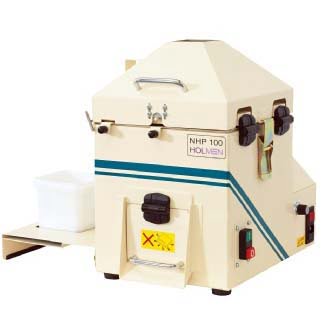
In the production of animal feed and pet kibbles, achieving optimal nutritional quality, feed efficiency, and product stability depends on more than just raw ingredient selection.
Two critical but often underappreciated aspects of feed manufacturing—steam conditioning and particle size reduction—play a significant role in determining the quality and performance of the final product. Alongside these, pellet durability also remains a key indicator of processing success and feed value…
1. Steam Conditioning: Enhancing Pellet Quality and Digestibility
Steam conditioning is a pre-pelleting process where steam is introduced into the feed mash, raising its moisture content and temperature. This step softens the particles, activates natural and added binders, and facilitates starch gelatinization—an essential transformation that improves both pellet binding and nutrient availability.
Key benefits of good steam conditioning include:
Improved pellet binding: Heat and moisture help particles stick together, producing denser, more cohesive pellets or kibbles.
Increased starch gelatinization: This enhances digestibility, especially important for monogastric animals and pets.
Reduced die wear and energy consumption: Properly conditioned mash passes through the pellet die more easily, reducing mechanical strain.
Better pellet durability: Moisture and heat improve the cohesion of ingredients, helping pellets withstand handling, transport, and storage without crumbling.
Poor steam conditioning, on the other hand, can lead to brittle, dusty pellets that not only reduce feed efficiency but also compromise feed safety and hygiene.
—
2. Particle Size: Balancing Digestibility and Pellet Quality
The size of ground particles in feed mash directly influences processing performance and animal digestion. Fine grinding (smaller particles) increases the surface area for enzyme action, thereby improving nutrient absorption. However, overly fine particles can negatively impact pellet quality and machine throughput.
Optimal particle sizing delivers a balance between:
Digestibility: Finer particles are more readily broken down in the digestive tract, enhancing nutrient uptake.
Pellet quality and durability: Slightly coarser particles can improve pellet structure and reduce dust.
Pelleting efficiency: Coarse or uneven particles may cause blockages or increase energy consumption during pelleting.
In poultry, for instance, excessively fine feed can lead to gizzard erosion, while in ruminants, coarser particles help stimulate rumination and saliva production. Thus, tailoring particle size to the species and application is crucial.
—
3. Pellet Durability: A Marker of Feed Quality
Pellet durability refers to a pellet’s resistance to breaking apart under mechanical stress during transport and handling. Low durability results in dust and fines, which reduce feed intake consistency and can cause nutrient imbalance.
Good steam conditioning and appropriate particle sizing directly contribute to higher pellet durability. Well-conditioned mash binds better, and the right particle size promotes uniformity and structural integrity. Feed mills often measure durability using the Holmen Pellet Durability Index (PDI), aiming for a higher percentage in most commercial applications.
—
Conclusion
In the competitive world of animal nutrition and pet food, producing high-quality, efficient, and durable feed is both a science and a craft. Steam conditioning and particle size are foundational elements of this process. When optimised, they not only improve pellet durability and feed efficiency but also enhance the health, performance, and satisfaction of animals consuming the product.
Feed manufacturers who pay attention to these critical parameters position themselves for success—not only in product performance but also in operational efficiency and cost-effectiveness!
For further reading on the topic of pelleting, we can recommend the following detailed article:
Article: – Pellet quality in a compound feed factory – Thoughts from Feed Design Lab






